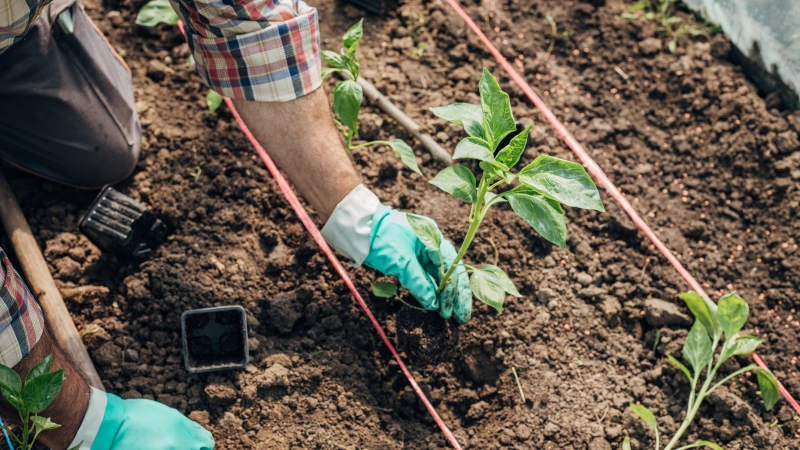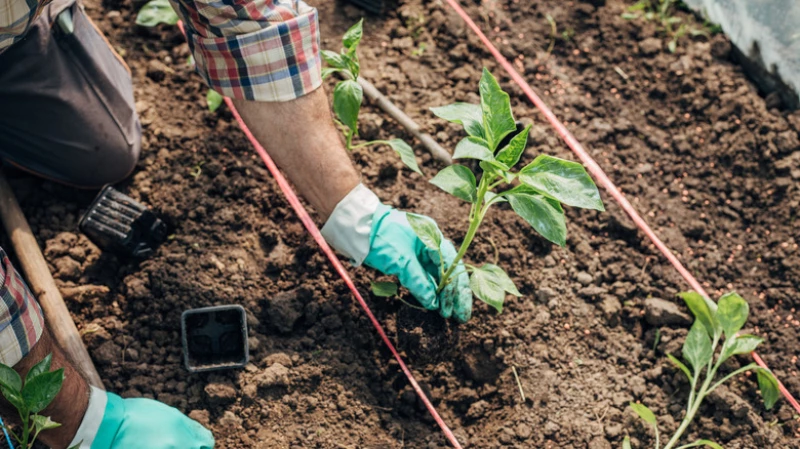When it comes to enjoying peppers (Capsicum annuum), vegetable lovers have countless options, whether they prefer a sweet or spicy flavor. However, the true satisfaction comes from knowing that you are savoring peppers from your own homegrown harvest. Growing peppers may seem simple, but it actually requires careful timing. While it is generally recommended to plant peppers in early spring or late winter, the exact timing depends on the last frost date. Typically, pepper plants can be transplanted to your garden a few weeks after the last frost. If you are starting from seed, sow them indoors about two months before the last frost.
When to sow pepper seeds indoors
As warm-season vegetables, pepper plants struggle to grow in cold conditions. Because of this, get a head start by sowing the seeds indoors where they can stay warm. Moreover, this minimizes the risk of the tiny seeds washing out during routine irrigation. Most cultivars are best sown around eight to 10 weeks before the last frost date. If desired, you can sow them earlier to give them more time to grow before they're transplanted, but you also don't want to keep them inside for too long. The goal is to avoid stressing the plant by exposing it to temperatures below 55 degrees Fahrenheit during its germination stage.
Guesstimating the last frost is difficult due to variations in hardiness zones and unpredictable weather. To get an estimate, you can use resources like Almanac or Garden.org by entering your zip code. However, gardeners in zones 10 to 13 have the advantage of a frost-free climate and can plant peppers throughout the year. When the time is right, sow the seeds in a potting mix, cover the container with a heat mat, and use grow lights to raise the soil temperature to around 70 degrees Fahrenheit for faster growth. The seeds should sprout in approximately two weeks and can then be transferred to pots. After about six to eight weeks, gradually acclimate the plants by placing them outdoors in dappled shade for a few hours each day, increasing the duration over time.
When to plant pepper seedlings in the garden
Once the risk of frost has passed and the night temperatures consistently stay above 55 degrees Fahrenheit (usually two to three weeks after the last frost), it is safe to transplant pepper seedlings into the garden. Planting them before this time can result in poor fruit development and stunted growth. To prepare the ground, apply a layer of mulch that is approximately 10 inches thick. If the soil is not warm enough, you can also use a black plastic cover at least a week before planting. Another option is to plant the seedlings in raised beds, as these tend to have warmer soil. It is important to avoid planting peppers in areas where tomatoes, eggplants, and potatoes have been grown in the past three to four years, as these plants are all part of the nightshade family and can be susceptible to the same diseases that may still be present in the soil.
Proper Care for Growing Peppers
For successful pepper growth, it is important to follow these steps:
- Dig 3- to 4-inch-deep holes at every 12 to 18-inch distance (or more, based on the cultivar).
- Soak the holes deeply.
- Apply a teaspoon of phosphorus-rich fertilizer to the dug areas.
- Place the grown transplants when it's cloudy or in late evening to prevent wilting under heat.
- Pack the young plants with soil and drench their roots.
- Create a small depression around the plants to improve water retention.
- Avoid exposing the peppers to temperatures above 85 degrees Fahrenheit, as this can result in papery fruits.
- When necessary, cover the plants with shade cloth to protect them from harsh sunlight.









